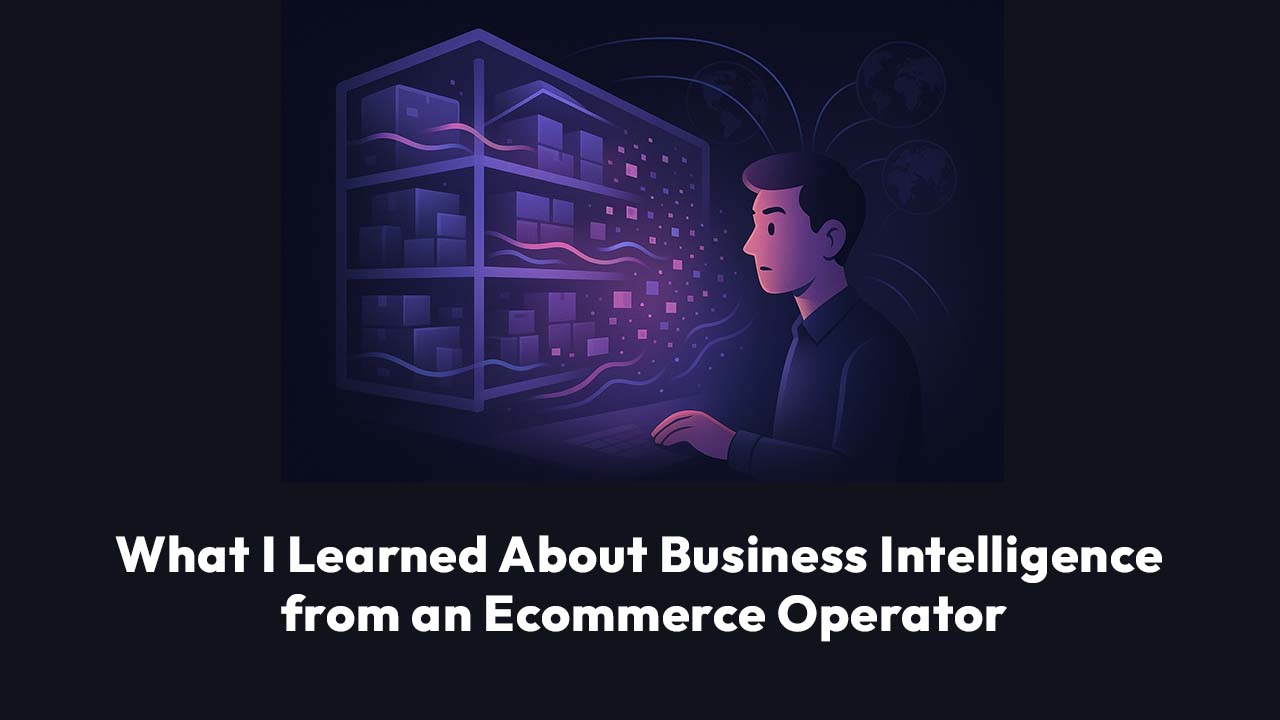"I Realized How Automated The Whole Process Could Have Been"
This week I sat in on a demo with an e-commerce operator who runs a multi-country fulfillment operation—warehouses in the UK, Germany, and the UAE, sourcing from China, managing everything from Kuala Lumpur.
About ten minutes into our conversation, he said something that perfectly captured what we're seeing across hundreds of e-commerce businesses:
"One of the people who worked for me manually does all the labels and everything. She had a family crisis—her mom died—so I had to take over her job for two or three weeks when I just arrived in Malaysia. And I realized how automated the whole process could have been."
That moment of forced perspective—where you're suddenly doing the work instead of managing it—reveals truths that quarterly reviews and process documentation never capture.
The Single Point of Failure Problem
Here's what struck me about his situation: This wasn't a case of bad management or poor planning. He'd built a profitable international e-commerce operation. He'd successfully navigated the complexity of multi-country fulfillment. He'd even automated parts of the operation using APIs and third-party tools.
But the daily operational rhythm—the labels, the stock updates, the inventory decisions—all lived in one person's head and hands. Not because that was the plan, but because that's how it evolved.
When that person couldn't work, the entire system became visible in a way it never was before. Suddenly he was manually downloading stock lists every day. Creating a new spreadsheet. Then another. Then another.
"We used to daily download our stock list, and then we'd have a new sheet, and then we'd have a new sheet. And I just thought, This is ridiculous."
The Data Sprawl Nobody Talks About
What fascinated me was his description of the data problem. This wasn't about not having data—e-commerce operations are drowning in data. Every order, every SKU movement, every warehouse transaction generates a record.
The problem was that the data lived in daily snapshots. Individual spreadsheets. Static exports. The kind of data architecture that makes perfect sense when you're moving fast and solving immediate problems, but becomes a nightmare when you need to understand patterns over time.
He'd finally automated the consolidation—getting all that stock level data into one place. But then came the harder question: Now what?
"I saw your software and I thought, I bet you if I connected that to it, I could ask questions about our stock. I could maybe be clever about it. Maybe I could make myself more artificially intelligent."
That phrase—"make myself more artificially intelligent"—is something I've been thinking about for days.
The Intelligence Gap in E-commerce Operations
Most conversations about e-commerce automation focus on the transactional layer: order processing, label generation, shipping integrations. That's table stakes now. The platforms have mostly solved those problems.
But there's a second layer of automation that almost nobody has figured out: decision intelligence.
When should you restock? Which products are sitting too long? What patterns in your inventory movement predict future problems? These aren't transactional questions—they're analytical ones.
And right now, most e-commerce operators are answering them the same way they did ten years ago: gut feel, manual spreadsheet analysis, and reactive firefighting.
He described exactly what he was looking for: "Something to understand the changing in the numbers every day, and to be able to guide me on making better choices when restocking. Something so I know that things aren't sitting there for too long."
Why This Represents a Bigger Opportunity
What's interesting about e-commerce operators like him is that they're not looking for someone to make decisions for them. They understand their business. They know their customers. They have the domain expertise.
What they need is leverage. They need their data to tell them what their intuition suspects but can't prove. They need to move from "I think we should restock this SKU" to "The data shows this SKU's velocity increased 40% over the past two weeks."
The gap isn't knowledge—it's time and tools. These operators are running lean. They're managing warehouses across multiple countries, navigating currency fluctuations, dealing with supplier delays, responding to market demands. They don't have time to become data analysts.
But they're sophisticated enough to know what questions to ask. They just need systems that can answer them.
The International Complexity Layer
One detail that caught my attention: He'd moved to Malaysia specifically for operational advantages. Better timezone alignment with China. Lower cost of living. Reliable infrastructure. The ability to be "ahead of the time zone with everybody."
Modern e-commerce operations aren't constrained by geography anymore. You can source from China, warehouse in Germany and the UAE, sell in the UK, and manage it all from Southeast Asia.
But that geographical flexibility creates new complexity. Different systems. Different time zones. Different data formats. The old approach of having everything visible in one room, one ERP system, one source of truth—that doesn't work anymore.
Which means the need for intelligent automation isn't just a nice-to-have efficiency gain. It's becoming a requirement for operating at this level of complexity.
What This Means for the Industry
I think we're at an inflection point in e-commerce operations. The first wave of automation solved the transactional layer. The second wave is going to solve the intelligence layer.
The companies that figure out how to make their operators "artificially intelligent"—to use his phrase—are going to have a massive advantage. Not because they're replacing human judgment, but because they're augmenting it.
Instead of manually reviewing hundreds of SKUs to decide what to restock, you can have systems that flag the ones that need attention. Instead of discovering inventory aging problems reactively, you can predict them proactively. Instead of making decisions based on yesterday's snapshot, you can understand trends over time.
The operators who get there first will move faster, waste less capital on dead inventory, and avoid stockouts on fast-moving products. The gap between "running on gut feel" and "running on intelligence" is going to get wider.
The Path Forward
What I found most encouraging about this conversation was his approach. He wasn't trying to rebuild his entire operation. He wasn't waiting for the perfect system. He was taking one problem—stock level management—and solving it incrementally.
Get the data consolidated. Connect it to something that can help him ask questions. Start learning what patterns matter. Build from there.
That's how the best operators work. They don't wait for perfect. They find the highest-leverage problem, solve it, learn from it, and move to the next one.
For e-commerce operations, inventory intelligence is often that highest-leverage problem. It ties directly to cash flow. It affects customer satisfaction. It determines whether you're capital-efficient or bleeding money on storage fees and dead stock.
And increasingly, it's the difference between operators who are scaling intelligently and those who are just getting bigger without getting smarter.








.png)